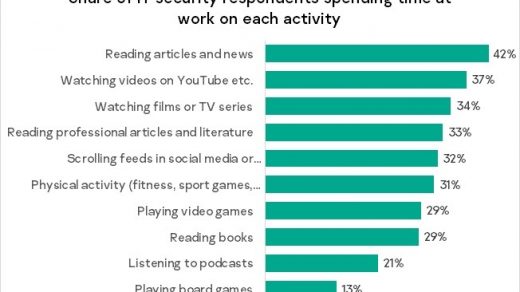Business-to-business (B2B) marketing may be very similar to business-to-consumer (B2C) marketing in terms of goal, and that is to sell a product or service to the intended audience. However, they greatly differ when it comes to criteria, techniques, and execution involved in the selling process.
For instance, consumer marketing tends to rely on an emotional appeal to persuade buyers to make a purchase, which is in stark contrast with the business market’s more rational approach to purchasing. That said, audience research is indeed a vital aspect – the backbone, so to speak – of B2B marketing.
B2B marketers need to understand the customer’s needs and present a combination of marketing solutions that will help drive profit into the business.
What are the benefits of audience research in B2B marketing?
While
the general idea is to use audience research to find out what your market
needs, there are some very specific rationale behind it.
1. By knowing your audience, you can
generate leads for your B2B business.
B2B markets may be generally small and focused targets, but within these markets, there are audience segments that can potentially be your key personas.
You can then perform a target analysis of their interests, lifestyle, habits, and attitude, and build a B2B database that will give your marketing, sales, and customer teams real buyer personas to reach out to.
Further down the marketing funnel, B2B firms may use audience research to identify industry leaders and influencers who can connect well with their audience of interest.
2. Marketers can also leverage audience research in content marketing and distribution.
Familiarity with one’s audience makes content creation as relevant as possible since the data may reveal what subject (including its length, format, and nature – whether it’s data-heavy or light in context) they want to consume, like, or share.
Data-backed research on your target market is also helpful in choosing which media platform to distribute your content, whether it’s on social media, email, website, industry forums, podcasts, and other such channels where your audience typically spends time.
3. B2B marketers can gain a better understanding of
vertical markets.
Part of audience research is knowing the ins and outs of an industry, including trends and
challenges in the market.
By venturing into this research area, marketers can get a good grasp of what the industry demands, where the market is heading, and which branding strategies produce more positive results. Check out this panel sample if you’re looking for experts to do market research for your business.
Altogether, these insights may prove to be helpful for enterprise marketers in addressing competition and positioning their business model better.
How can B2B companies translate audience research into actionable plans?
Here are some great, fun, and easy ways to do market research on your audience:
1. Surveys and/or Interviews
Send out customer satisfaction surveys via email to ask for feedback about their recent purchase or transaction with your company.
To motivate people to respond, you may offer some incentive or freebies with some straightforward mechanics for claiming their reward. Otherwise, you might lose an opportunity to connect with them again should you want to follow up the survey with an interview.
Another idea is to sponsor an event and invite resource speakers to talk about trending topics in the industry. From there, you can distribute surveys or come up to attendees to ask them directly about the event, as well as any suggestions they might have.
2. Social Media
The online space and social media are this age’s leading repositories of information, data, analysis, and insights. Keep track of your audience’s digital footprints. What your customers are saying or looking for, who they’re following, or which content they’re sharing to know what’s truly important for them.
The good thing is that many of the online platforms around have tools like mentions and links builder to help you monitor your social media marketing efforts.
3. Internal Info Sourcing
Within your organization, your sales and customer service teams can give you very valuable information about your market or audience. You may help those in sales formulate leading questions that you would like to ask your customers if you were to meet them, and have your sales professionals note down those responses for you.
You may also sit with your customer care front-liners to get a first-hand opportunity in interacting with customers, so you’ll know how your product or service fares with them.
4. Competitor research
There’s almost always a gap in a niche or industry, which works quite well for everyone if you think about it. As they say, a lost opportunity may mean new or additional business for someone else.
So, feel free to check out your competitor’s website and social media accounts, fill any gap you see and enhance their offerings to give your customers a better experience along the way.
Understandably, customer research may sound overwhelming at first, especially with all the data collection and analysis involved. But if planned well and executed properly, you’ll be on point delivering and serving your customers’ needs, and at the same time, giving your business more room to grow and succeed.



Recent Comments